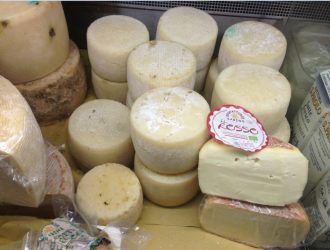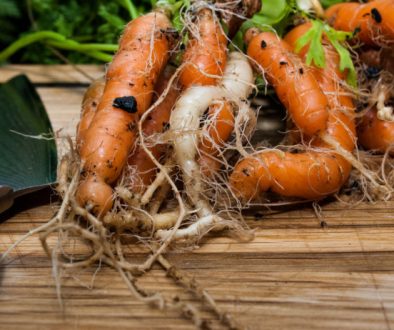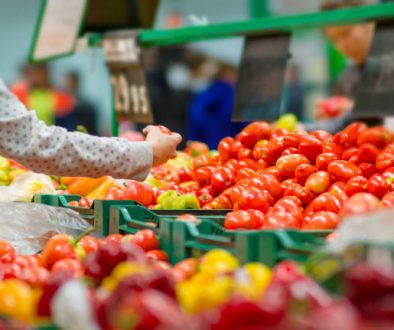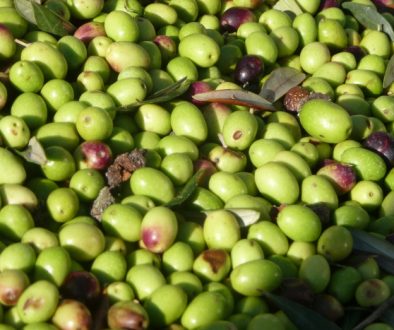If you’ve ever wondered what is DOP certified food, then you’ve stumbled on the right article. Here’s what DOP means.
The acronym PDO stands for ‘Protected Designation of Origin’, called in Italian DOP (Denominazione di Origine Protetta). When you see a food labeled PDO or DOP, you know it is has been certified within an EU quality authentication system. Introduced by the European Union (EU) to protect food that comes from a particular geographic location, the PDO label ensures that where the food was grown, determines its quality for the consumer.
Why do I need my food certified?
These labels are a good thing. They protect farmers and certain food products from unfair competition by food that may carry the same name but are not produced, processed, and prepared in the same place or within a regulated system.
In other words, the PDO certification scheme ensures that only the foods with this label, that have been traditionally manufactured in that region are legally entitled to use the region’s name in commerce.
Each Italian region has its own PDO so you can easily identify where it comes from, how its made & whose made it. This protects the “real Italian food” from copycats & ensures that what’s on your plate is completely unique and regualted.
Since it’s introduction, there’s been ‘boom’ in products applying for and getting PDO / DOP status. Italy has the most PDO/DOP certified foods than any other country with 161 out of 583 products, with new ones being added every year.
How many certified products does Italy have?
Italy produces over 1,27 million tons of DOP/IGP/STG cheeses, bread products, fruit, veg and oils, and many of them are household names. You’ve definitely come across a DOP product if you’ve been to Italy or bought Italian import food products in your own country.
Some well known PDO / DOP products that may have made it to your table are:
- Grana Padana DOP parmesan cheese
- Prosciutto di Parma DOP cured ham
- Toscana DOP Extra Virgin Olive Oil
- Mozzarella di Bufala Campana DOP
- Traditional Modena Balsamic Vinegar DOP
- Mela Val di Non DOP apples
Interestingly enough, the majority of PDO/DOP products come from Northern and Central Italy, especially the Emilia Romagna region that boasts 19 certified products.
How does this affect me as a consumer?
You may be saying – “This all sounds well and good, but what does it mean for me when I go shopping?” Well in short, you just need to make sure you’re not being charged higher prices for lower regulated foods.
Example please…
Ok, let’s take the example of Gorgonzola cheese – you know it, a greeny-blue veined cheese, which gained its PDO certificate back in 1996. It looks like blue cheese. But it’s not.
Well, thanks to DOP certification, not any blue cheese that looks similar can be sold as Gorgonzola which means – Gorgonzola and Blue Cheese are not the same. So you shouldn’t be paying the same prices, and you shouldn’t be expecting the same quality. The fact that Gorgonzola is PDO certified means that only cheeses that are made with un-skimmed milk originating from a geographical area around the town of Gorgonzola, near Milan, can boast the prestigious Gorgonzola name.
So… if you’re looking to be a food snob, when you get your assorted cheese platter at your next meal, ask if this blue cheese is PDO Italian Gorgonzola, or just blue cheese 🙂
Wait a second… so Blue Cheese & Gorgonzola are not the same?
Take a look at this map (here) to see all of the dairy farms in Italian regions of Piedmont and Lombardy where the milk is produced for ‘authentic’ Gorgonzola cheese, courtesy of the Gorgonzola consortium. Therefore, when you buy a slab of Gorgonzola “DOP”, you know that it’s the real deal and made only from milk that’s been produced in the unique agricultural and environmental conditions that give Gorgonzola it’s characteristic bite.
Oh man, that sounds like a label & an easy way to make money…
It’s not all about protecting trademarks and advertising standards. The PDO scheme’s more lofty purpose is to sustain rural economies by promoting geographically-specific foods produced locally, as well as helping make European agricultural products competitive on the domestic and world markets through its quality, not quantity.
This is good for everyone because a rich and various gastronomic culture is one of Europe’s most important assets as well as the fact that our beautiful rural landscapes are a ‘product’ or the farming techniques which have shaped our environment. If traditionally farmed products are uncut by lower-cost imitations, then the society, culture and environment which co-exists with them will also disappear too.
You’ve made it to the end of this article & now you know the difference between Gorgonzola and Blue Cheese… This makes you one step closer to being an aware consumer. Welcome to Italy Food Root’s mission!



